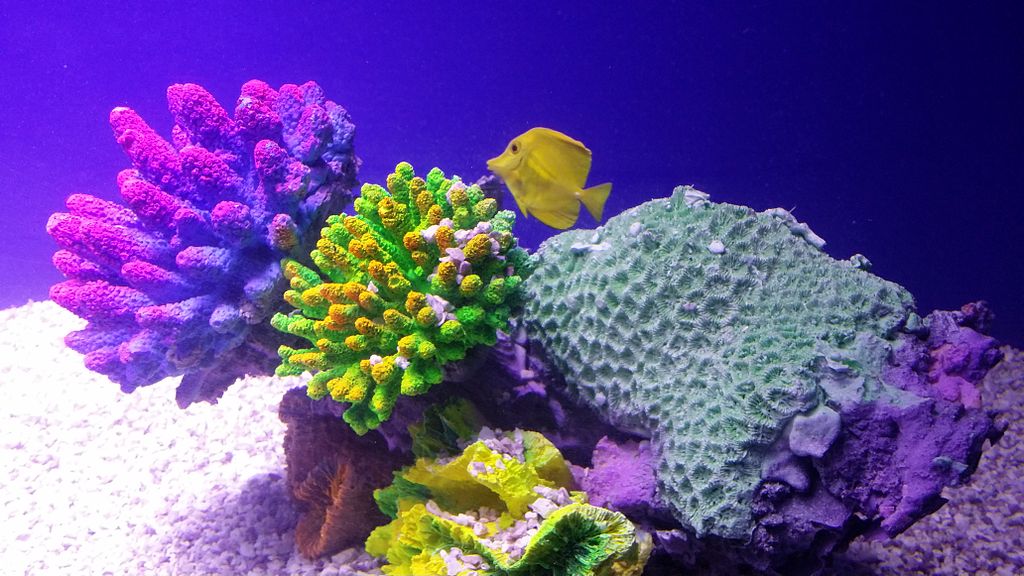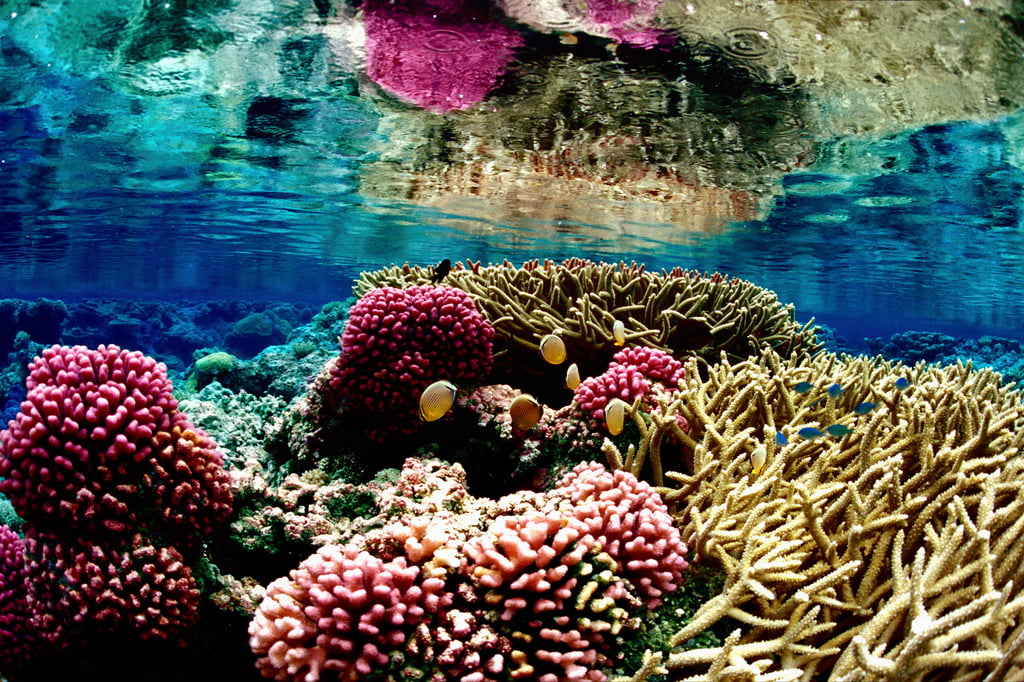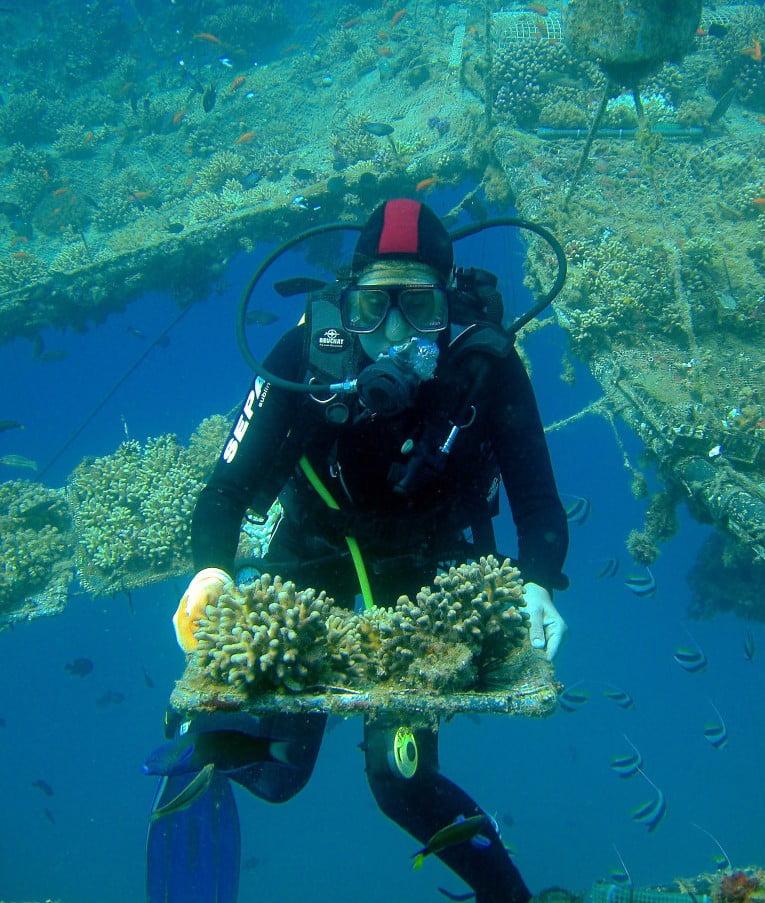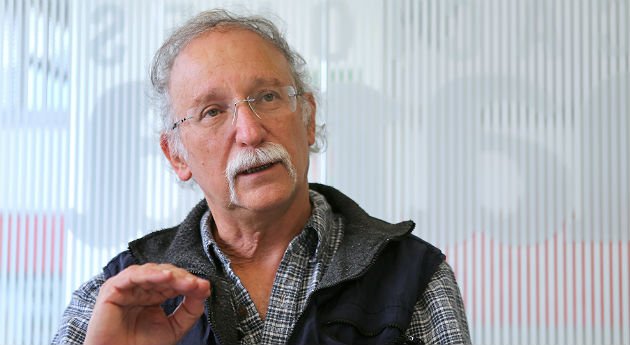Besides being home to the beautifully colored fish you see while snorkeling, or a nice souvenir to take home from the beach, coral is actually one of the most important lifeforms on our plant; it selflessly provides food, home and protection to the billions of fish and mollusks living in the sea. However, due to the effects of global warming in the world’s oceans, coral reefs are disappearing and in some locations—the Mediterranean Sea included—entire coral species are nearing extinction.
In order to prevent a real disaster under the sea, Israeli researchers have developed a new kind of carpet that will potentially pull the entire sea floor together. The coral carpet squares invented by Dr. Baruch Rinkevich, a senior scientist at the Israeli National Institute of Oceanography, measure approximately 40 inches by 40 inches (1 m X1 m) and are placed on the seafloor by divers, much like laying out patches of grass, but with spectacular results—they regenerate and revive dying coral reefs.
Dr. Rinkevich and his team have found that coral reefs are actually very similar in their behavior to tropical rainforests: they have ‘trees’ (stony coral that are rooted deep down in the seafloor), they are home to a large number of living creatures (fish, invertebrates, plankton and more), and most importantly they are a cesspool of life for a diversity of marine species.
“Coral reefs are often portrayed as ‘the rain forest of the sea,’” said Dr. Shai Shafir, one of Dr. Rinkevich’s partners in the project of coral reef gardening. “This refers to their being one of the most productive biological ecosystems on earth, to their high level of biodiversity, and above all, to their function as the building blocks of the ecosystem framework.”
In response to these observations, a new sector called marine forestation has emerged with Israel researchers Drs. Rinkevich and Shafir at the forefront. Using his specialization in the study of the population genetics of coral, water genotoxicity and coral reef restoration, Dr. Rinkevich has created a system to first harvest the coral into square panels and then to effectively transplant them into the ocean floor.
SEE ALSO: 200 year-old mystery solved: why do corals pulsate?
“Basically, what we’ve done here is copy the forestry concept,” said Shafir, “and the idea is really taking hold around the world because you can use it almost anywhere. What we told ourselves is that if a reef can be destroyed it can also be rebuilt. It’s not just about conservation, but also about active restoration.” The invention of these coral reef transplants is already being called by some the ‘saving grace’ of the world’s coral reefs, with countries like Columbia, Jamaica, Tanzania, Singapore, Thailand, the Philippines, the Seychelles and, of course, Israel already applying the method.
Sign up for our free weekly newsletter
SubscribeRecycling coral for a cause
Dr. Rinkevich’s coral reef patches are developed over time from real coral organisms. Using living coral taken from the sea, or even small pieces of coral that haven’t completely dried out, Dr. Rinkevich and his team harvest the coral on a square frame covered with netting that floats deep under the water. After implanting the living pieces of coral onto the net, the process of reproduction takes up to two years to complete, just enough time for little marine creatures to make their home in the newly grown coral. Finally, once the coral has developed enough, divers place the net on the seafloor and the coral carpet eventually becomes one with its environment.
The first of these coral farms was recently established in the southern Israeli sea town of Eilat where Drs. Rinkevich and Shafir will grow between 6,000-10,000 corals at a time. Throughout his studies Dr. Rinkevich has asserted that the creation of transplant farms is a more ‘active’ form of restoration than the designation of marine protective areas (known as passive restoration) where the coral are ‘left alone’ to recover.
 Despite the fact that it takes two years and sometimes longer to grow the coral on the nets, Dr. Rinkevich’s methods of coral reforestation have already proven their overwhelming benefits. For one, the coral carpet squares quickly and efficiently can cover entire expanses of barren sea floors, which according to Dr. Rinkevich is the most pressing ecological challenge facing modern marine engineers. In addition, they are relatively cheaply made (using plastic) and can easily be implanted by divers without the need for heavy tools.
Despite the fact that it takes two years and sometimes longer to grow the coral on the nets, Dr. Rinkevich’s methods of coral reforestation have already proven their overwhelming benefits. For one, the coral carpet squares quickly and efficiently can cover entire expanses of barren sea floors, which according to Dr. Rinkevich is the most pressing ecological challenge facing modern marine engineers. In addition, they are relatively cheaply made (using plastic) and can easily be implanted by divers without the need for heavy tools.
SEE ALSO: Something fishy: Research discovers why fish may be nearing extinction
Although it will take years if not decades to determine the success of Drs. Rinkevich’s method in restoring exuberant life to the world’s coral reefs, for now divers and lovers of marine life are enjoying tending to their coral reef gardens.
Photos: USFWA- Pacific Region/JNF Coral Reef Restoration/ Juan Carlos Sierra- SEMANIA/ Zavit/ Profmauri
Related posts

Resilient And Nutritious New Plant-Based Milk Aims To Make A Splash

Chocolate From Cultivated Cocoa Comes Without Environmental Toll

Plastic Fantastic: Startup Takes PVC Back To Its Crude Oil Roots






Facebook comments